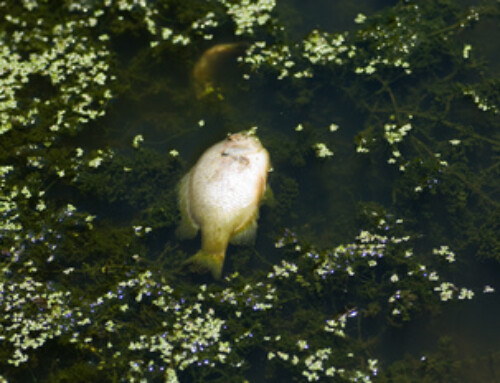Researchers found a record low biomass of alewife in Lake Michigan in 2016, according to a preliminary review of data by the U.S. Geological Survey.
“It’s looking like the lowest alewife abundance in (history),” said Chuck Madenjian, a USGS research fisheries biologist based in Ann Arbor, Mich.
The agency declined to release numerical estimates until it conducted additional quality checks on the data.
But the “overall impression is that alewives are down from last year,” said David Bunnell, a USGS biologist.
The USGS conducts an annual bottom trawl to assess forage fish in the lake. The work has been done at the same index sites since 1973.
The 4.0 kt total prey fish biomass was also an all-time low.
The alewife is not native to the Great Lakes but holds importance as a food source for sport fish, particularly chinook salmon.
The recent decline in alewife abundance led the Lake Michigan Committee to seek a stocking reduction.
Most scientists say the historic drop in alewife is primarily linked to quagga mussels, which remove food from the water needed by young alewife, and chinook salmon, which eat the fish.
Last month it was announced lake-wide plants of chinook salmon and lake trout would be cut 27% and 12%, respectively, in 2017.
State agencies in Michigan, Illinois and Indiana all agreed to reduce stocking of chinook, since the species is the primary predator of alewife.
But in Wisconsin, the Department of Natural Resources decided to maintain its current level of chinook stocking and reduce lake trout by 58% and brown trout by 50%.
The USGS bottom trawls were completed Sept. 25, Madenjian said.
In waters off Port Washington, 10 tows produced zero alewife. The drags were performed in water as deep as 420 feet and as shallow as 60 feet.
But when the research boat returned to the Port Washington harbor, alewives were visible in the water near the dock.
“That might sum up what is going on,” Madenjian said. “There is a relatively low abundance out in the lake, but there seems to be some associated with the harbors.”
A separate test that uses acoustic technology at night to detect young-of-the-year alewife and other bait fish was completed in August by the USGS and the Michigan Department of Natural Resources. Its data takes longer to interpret, although there is some indication a 2016 alewife year class was observed in parts of the lake.
“All the information kind of confirms what we were worried about last year and why we wanted to do stocking reductions,” said Jay Wesley, Michigan DNR fisheries supervisor and chairman of the Lake Michigan Committee. “But we are cautiously optimistic the 2015 year class will keep us going.”
A Wisconsin DNR spokesperson said Tuesday the preliminary USGS report would not cause the agency to adjust its 2017 stocking plans.
Source: Milwaukee Journal Sentinel







